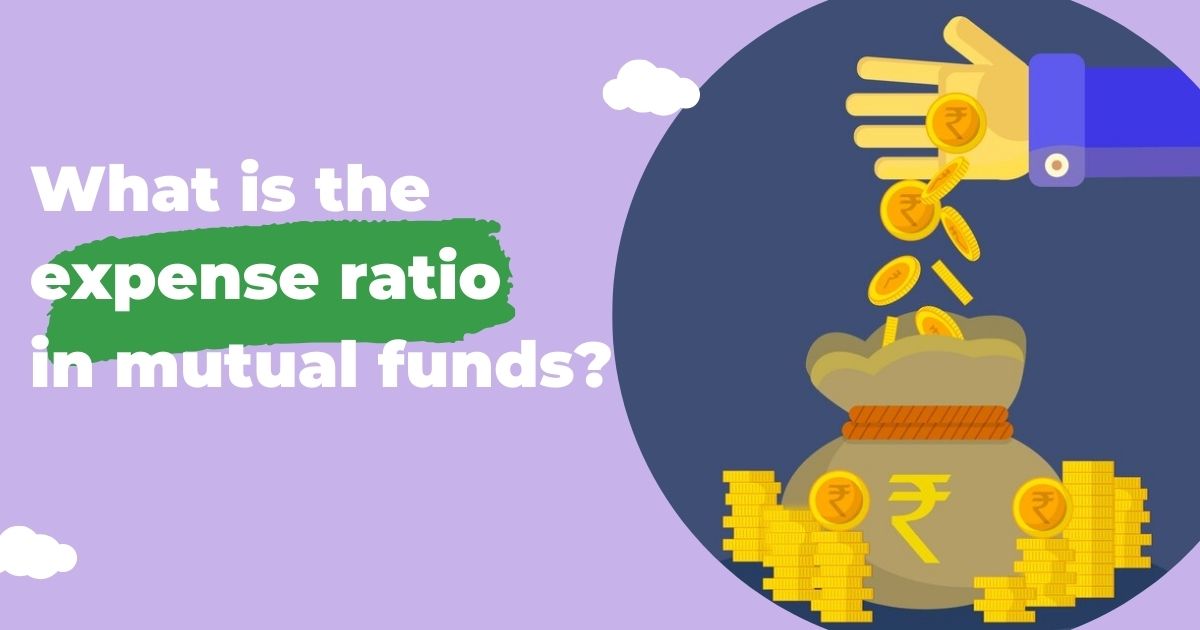What is the expense ratio in mutual funds?

As an investor, it is crucial to understand the expenses that come along with investing in mutual funds. The expense ratio is one among them. It is a type of fee charged by mutual funds for operating costs and other expenses including administration fees, and management fees. It is expressed as a percentage of the total invested assets and their management.
Formula to calculate expense ratio-
Expense ratio- total expenses/ average AUM
Where
Total expense = The costs incurred by the AMC, including the fund manager’s fee, marketing, and distribution expenses, and legal/audit costs.
And
Average AUM = The total value of all investors’ money in that fund.
Now let’s take an example to understand it better
A scheme with AUM (assets under management) of Rs 500 Cr and the expenses it bears for the above-mentioned costs sum up to Rs 12 Cr.
Hence, the expense ratio formula will be Rs 12 Cr/Rs 500 Cr= 24%
This ratio means that in a year, each investor will have to pay 24% as the expense ratio to the AMC, which will be deducted each day till the time you are invested in the scheme.
Components of Expense Ratio
There can be various types of expenses associated with a mutual fund expense ratio, like-
Fund Manager’s fee: There is a predefined investment objective that comes with every mutual fund and it is the fund manager’s decisions that ensure that these objectives are met. And to actively manage mutual funds’ expense ratio, some compensation is given to the fund manager as a part of the expense ratio.
In passive funds, this part of the mutual fund expense ratio is significantly lower compared to actively managed funds, as there’s no need for the fund manager to actively oversee the portfolio in the former.
Legal/Audit fee:Mutual funds in India are regulated by the Securities and Exchange Board of India (SEBI). Therefore, to ensure compliance with regulations and laws, they require ongoing legal oversight and audits of their processes and schemes. Any expenses related to audits, registration, etc., must be covered within the expense ratio.
Marketing/Distribution fee: – All the mutual fund ads we see on the TV, or across social media, come under its marketing. The costs that are incurred in the mutual fund’s marketing to create awareness, and then getting it distributed through mutual fund distributors are a part of the expense ratio.
The cost incurred by intermediaries is lower for direct funds and higher for regular funds due to the inclusion of brokerage fees for brokers or distributors when investing in regular funds. Therefore, opting for direct funds through ET Money is more cost-effective than investing in regular funds. Additionally, expenses related to marketing and pamphlet distribution are also encompassed within the 12B-1 fee.
Importance of Mutual Fund Expense Ratio
Now that you got a brief idea about the expense ratio let us understand its importance in your mutual fund journey-
It is now understood that the higher the expense ratio, the lower your returns will be. At the same time, a higher expense ratio does not imply it’s a better mutual fund. A fund with a lower expense ratio can be equally or more capable of producing better returns.
The expense ratio of a regular fund is higher than a direct fund. This is because while you invest in a direct fund through the AMC or platforms like ET Money, regular mutual funds are distributed through mutual fund distributors. Hence, the commission to the distributor also becomes a part of the expense ratio. Over some time, this commission has the potential of significantly lowering your returns.
While deciding between two similar mutual funds, the expense ratio can be one of the factors to guide you in deciding which fund to invest in. Let’s take an example. You are confused between two large cap equity funds A and B, with similar investment objectives and holdings, expense ratios of 1.5% and 2%. Your choice will clearly be found A.
The expense ratio has a greater impact on debt funds due to their comparatively lower returns. For instance, if a debt fund generates a return of 7% with an expense ratio of 2%, the net return would decrease to 5%, which may not be sufficient to outpace inflation.
So high expense ratios can cost you a lot of money, but how do you find profit yielding funds with low expense ratios? You have a lot of options, but it’s important to understand a few things:
Most of the ETFs are passively managed index funds, meaning they aim to track the performance of a specific index, so they’re going to be relatively cheap, compared to the average mutual fund.
Index mutual funds are also passively managed, and so they are also cheaper, they’re more affordable than ETFs, but mutual funds come with disadvantages relative to ETFs.
Funds based on a major index such as the S&P 500 have among the lowest expense ratios.
So now you have all the major points in mind, you may choose the funds wisely. Conduct a regular research or ask an expert to get more details on expense ratio.







